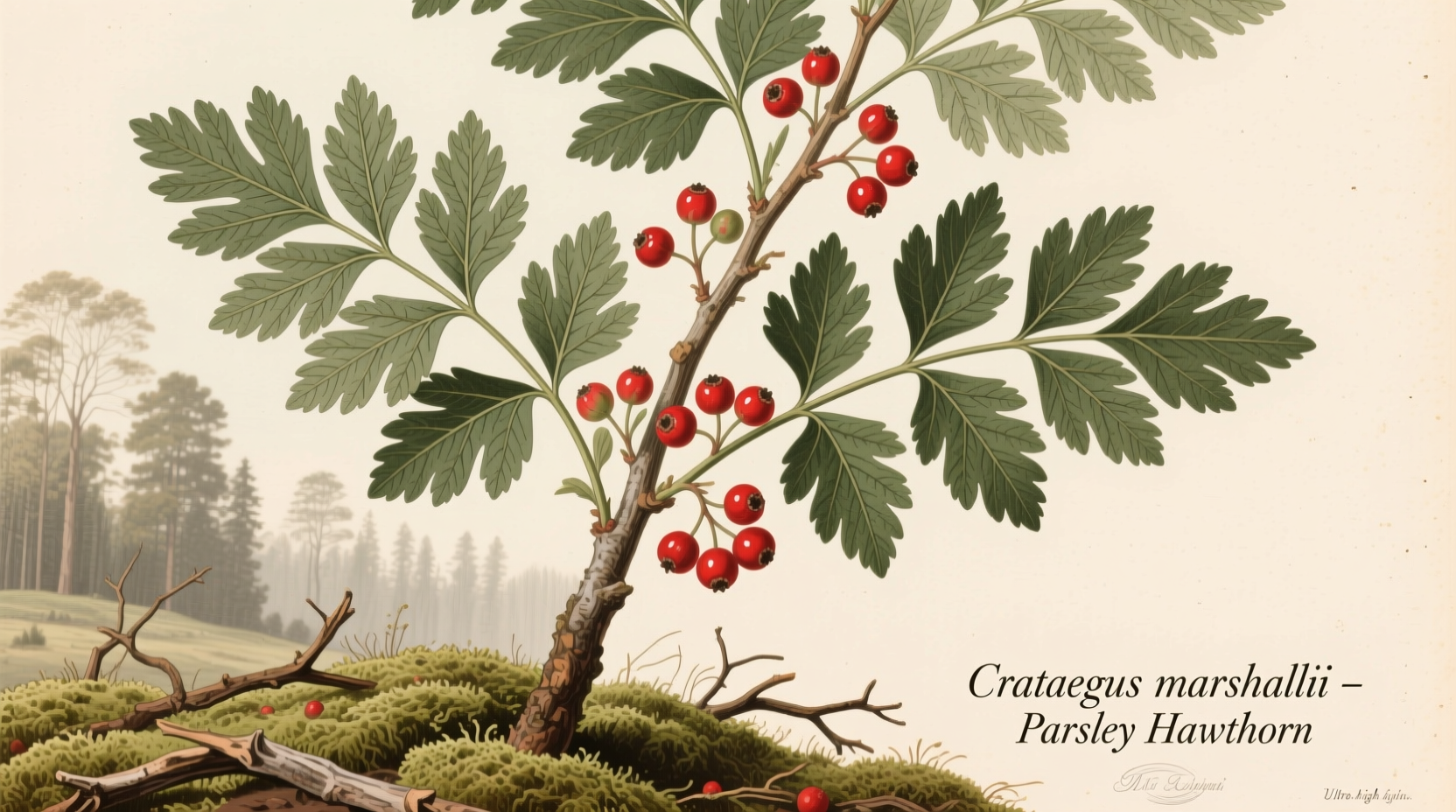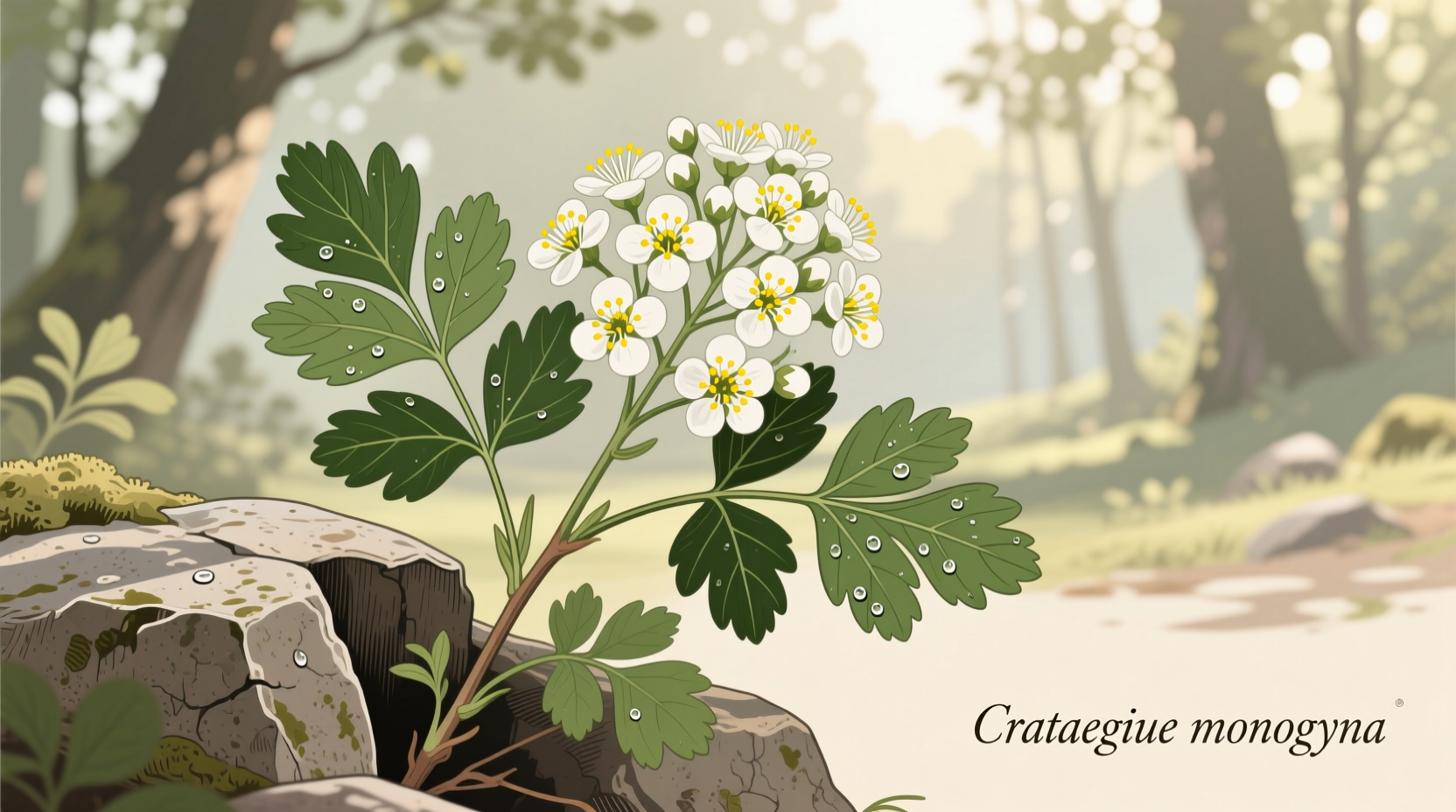If you're searching for information about parsley hawthorn (Crataegus marshallii), you'll discover a distinctive native tree with parsley-shaped leaves, white spring blossoms, and vibrant red berries that provide year-round ecological value. This comprehensive guide details its identification features, ideal growing conditions, wildlife benefits, and practical cultivation tips for gardeners and nature enthusiasts.
What Exactly Is Parsley Hawthorn?
Parsley hawthorn (Crataegus marshallii) stands out among hawthorn species with its uniquely lobed, parsley-like foliage that gives this tree its common name. Native to the southeastern United States, this small deciduous tree typically reaches 15-30 feet in height and serves as an important understory component in forest ecosystems. Unlike many hawthorns known for aggressive thorns, parsley hawthorn features relatively modest spines, making it more garden-friendly while still providing valuable wildlife habitat.
Key Identification Features You Should Know
Recognizing parsley hawthorn begins with examining its most distinctive characteristic—the deeply lobed leaves resembling flat-leaf parsley. These 2-4 inch leaves emerge bronze-colored in spring, mature to dark green, and often display attractive yellow to orange fall color. In April and May, clusters of white flowers with pink anthers create a striking display, followed by small (¼ inch) red pomes that persist through winter.
When identifying this species, pay attention to these specific markers:
- Leaf structure: Deeply incised margins with 3-7 lobes, giving the "parsley" appearance
- Bark: Smooth gray on young trees, developing shallow fissures with age
- Thorns: Typically 1-2 inches long, less aggressive than other hawthorn varieties
- Fruit: Small red berries that remain on branches well into winter

Habitat Requirements and Growing Conditions
Parsley hawthorn naturally thrives in moist woodland settings, particularly along stream banks and in swamp margins throughout its native range from Virginia to Texas. This adaptable species tolerates various soil conditions but performs best in moist, acidic soils with good drainage. While it prefers partial shade in its natural understory habitat, it can adapt to full sun when properly established.
Gardeners should note these specific cultivation requirements:
- Soil pH: Prefers slightly acidic conditions (5.5-6.5) but tolerates neutral soils
- Moisture: Requires consistent moisture, especially during establishment
- Light: Grows well in partial shade to full sun
- Cold hardiness: USDA zones 6-9
How Parsley Hawthorn Compares to Other Hawthorn Species
| Feature | Parsley Hawthorn | Washington Hawthorn | English Hawthorn |
|---|---|---|---|
| Leaf Shape | Deeply lobed, parsley-like | Shallowly lobed | Deeply lobed |
| Thorn Length | 1-2 inches | 1-3 inches | Up to 3 inches |
| Fruit Persistence | Fall through winter | Winter through early spring | Fall through winter |
| Natural Habitat | Moist woodlands, stream banks | Dry upland forests | Woodland edges, hedgerows |
| Native Range | Southeastern US | Eastern US | Europe |
Ecological Benefits and Wildlife Value
The ecological importance of parsley hawthorn extends far beyond its ornamental appeal. According to research from the USDA Natural Resources Conservation Service, this species supports over 90 species of native moth and butterfly larvae, making it a vital component of local food webs. The spring blossoms provide nectar for pollinators, while the persistent winter berries serve as crucial food sources for songbirds during lean months.
Wildlife specifically attracted to parsley hawthorn includes:
- Birds: Cedar waxwings, robins, cardinals, and grosbeaks feed on the berries
- Pollinators: Native bees and butterflies visit the spring flowers
- Mammals: Squirrels and raccoons occasionally consume the fruit
Practical Cultivation Guide for Gardeners
Successfully growing parsley hawthorn requires attention to its natural preferences. When planting, select a location with morning sun and afternoon shade if possible, particularly in southern parts of its range. Dig a planting hole twice as wide as the root ball but no deeper, ensuring the root flare remains above soil level. Water deeply twice weekly during the first growing season, then reduce frequency as the tree establishes.
For optimal growth and flowering:
- Planting time: Early spring or fall when temperatures are mild
- Soil preparation: Amend with organic matter to improve moisture retention
- Pruning: Minimal required; remove only dead or crossing branches in late winter
- Fertilizing: Generally unnecessary if planted in suitable soil
Common Challenges and Solutions
While generally disease-resistant compared to other hawthorns, parsley hawthorn can occasionally face issues. The most common problems include:
Fire blight: This bacterial disease affects members of the rose family. Prevention includes avoiding high-nitrogen fertilizers and promptly removing infected branches. According to University of Georgia Extension, resistant varieties are preferred in fire blight-prone areas.
Cedar-hawthorn rust: This fungal disease requires both hawthorn and juniper hosts. Management involves removing infected leaves and ensuring good air circulation around the tree.
Drought stress: During extended dry periods, provide deep watering once weekly to maintain soil moisture without waterlogging.
Why This Native Tree Deserves More Attention
Parsley hawthorn represents an excellent choice for native plant gardens, rain gardens, and naturalized landscapes. Its multi-season interest—from spring blossoms to winter berries—provides year-round visual appeal while supporting local ecosystems. Unlike many non-native ornamentals, this species has evolved alongside regional wildlife, creating essential habitat connections that non-natives cannot replicate.
As native plant awareness grows, horticulturalists at institutions like the Morton Arboretum note increasing interest in underutilized native species like parsley hawthorn for sustainable landscaping. Its moderate size, attractive form, and wildlife value make it particularly suitable for smaller properties where larger trees might be overwhelming.











 浙公网安备
33010002000092号
浙公网安备
33010002000092号 浙B2-20120091-4
浙B2-20120091-4